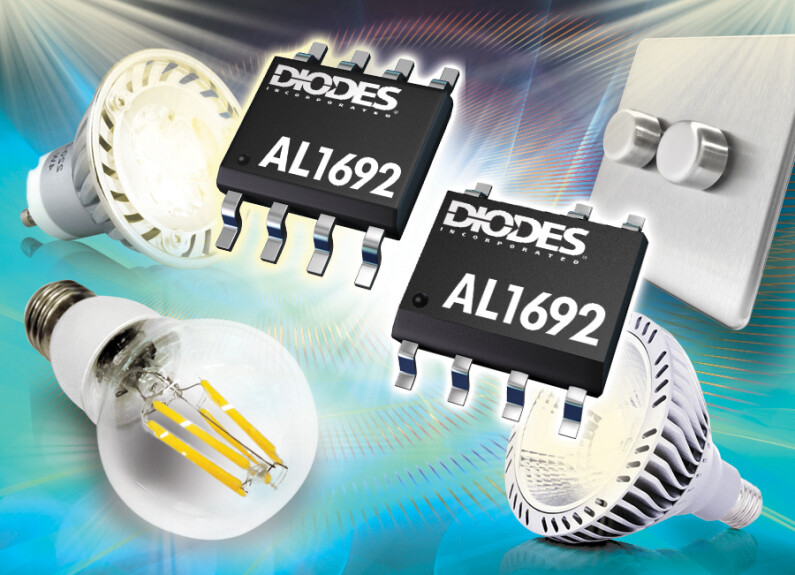Keeping the Lights On, At Just the Right Level

By Allan Lin – LED Lighting Business Unit Director
The benefits of Solid-State Lighting (SSL) drive the continued replacement of more traditional incandescent and fluorescent lighting, and the reasons are clear. SSLs offer significant power savings and longer lifetimes; they can easily be four times more power efficient in terms of light output and last up to five times longer than incandescent lighting.
While the energy efficiency of SSLs is inherent, it has always been possible to make savings by reducing the output of a light fitting. The ratio between input and output for fluorescent lighting is effectively unity, so limiting the light output to half would result in using half the input power; the same is true for LED lighting. Dimming technology has been used in lighting for many years, not just as a way to lower power consumption but because it can be useful or simply desirable to control the intensity of light produced by one or multiple fittings.
Traditional incandescent light fittings present a resistive load, so it is relatively simple to develop a driver that supports dimming across the entire output range of a fitting. Most dimmers use either a PWM- or Triac-based switching approach to adjust the phase angle of the AC cycle that is applied to the light. For resistive loads zero-crossing detection is easily maintained, which helps improve EMC.
LED technology is different, however. It doesn’t present a linear resistive load, which means dimming drivers or controllers developed for fluorescent or incandescent lights are not guaranteed to work with LEDs. To compound the problem there is no common standard followed by LED lighting driver manufacturers, so what may work with one manufacturer may not work with any other.
This can lead to flicker or a limited dimming range, neither of which are desirable for the end user. Imagine a home owner’s dismay if they can only dim their newly installed LED lighting by 20%, instead of down to 10%, or the lights constantly flicker when dimmed for TV viewing.
Choosing the right LED driving technology when developing a Triac-based controller or driver is critical, as it will allow support for a wider range of LEDs and dimmers, enabling manufacturers to cover a larger part of the market with a single product. The AL1692 from Diodes targets this application space; it’s a family of devices that employs a number of innovative techniques that means it can be used in installations driving up to 25W, employing leading edge and trailing edge dimming to achieve deep dimming to as low as 1% for certain dimmers.
With support for non-isolated buck-boost, boost, and isolated flyback topologies, it uses Boundary Conduction Mode, which extends the switching periods of a conventional continuous conduction mode boost converter to three; on-time, off-time and resonant-time. One benefit of this is it allows smaller and less expensive diodes to be used.
The AL1692 family is offered in driver (integrated MOSFETs in one package, up to 15W) and controller (external MOSFETs, up to 25W) configurations for mains-powered triac-based dimmable LEDs or offline LED power supply drivers. It can be used with a single winding inductor, which also provides BOM savings.
LEDs are rapidly becoming the lighting technology of choice and will continue to displace fluorescent and incandescent fittings. The benefits of dimmable lighting extend to LEDs and lighting manufacturers now have the opportunity to develop Triac dimmable controllers and drivers that meet consumer retrofit replacement expectations.